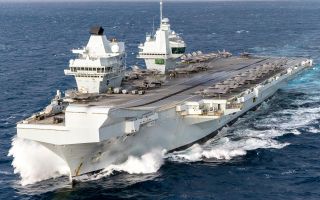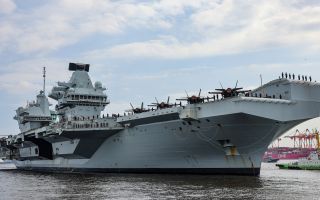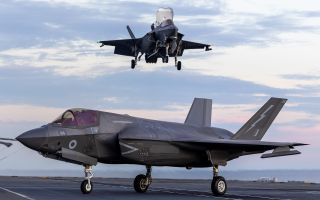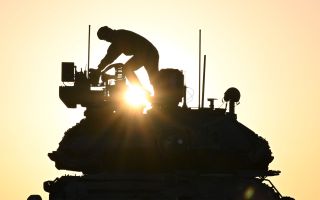
Deep dive into the Dreadnought-class Trident nuclear submarines

Dreadnought-class nuclear-armed ballistic missile submarines are the "epitome of naval engineering" – replacing the Royal Navy's Vanguard-class submarine fleet.
The submarines will maintain the UK's Continuous At Sea Deterrence (CASD), providing "unrivalled strength and security", according to the Royal Navy.
Four Dreadnought submarines, named HMS Dreadnought, HMS Valiant, HMS Warspite and HMS King George VI are being constructed by BAE Systems at its Barrow-in-Furness shipyard in Cumbria for the Royal Navy.
The total estimated cost for the Dreadnought programme is approximately £31bn with the first submarine expected to enter service in the 2030s with a service life of a minimum of 30 years.
This February saw a significant milestone in the construction of Warspite, the third of four new submarines.
In a ceremony at BAE Systems' Barrow-in-Furness site, the steel was cut.
Alex Chalk, Defence Procurement Minister, said at the time "progress on the Dreadnought Class is crucial to maintaining our national security".
"Our nuclear deterrent protects every UK citizen from the most extreme threats, every minute of every day," he said.
Somewhere in the world's oceans, there are always up to four British nuclear submarines patrolling the waters, carrying an arsenal of Trident thermonuclear warheads as part of the UK's CASD – 24 hours a day, 365 days a year.
These Dreadnought-class submarines will be Britain's next generation of nuclear deterrents.
Crew
Each Dreadnought-class submarine will accommodate 130 crew members, including three chefs and one doctor.
They will also feature separate female crew quarters, toilets and washing facilities.
Weaponry
Like the Vanguard-class submarines that they will be replacing in the Royal Navy's Submarine Service fleet, Dreadnought-class submarines will be capable of launching Trident 2 D5 missiles.
The Royal Navy says that all of the new submarines will each have three missile compartments, and each compartment will comprise of four missile tubes (known as a 'Quad Pack') and five deck levels, for a total of 12 missiles.
Dreadnought-class submarines will also feature four 533mm torpedo tubes for Spearfish heavyweight medium-range torpedoes.
Power under the water
According to the Royal Navy, the Dreadnought-class submarines will use a more effective propulsion system.
They will be powered by a Rolls-Royce nuclear propulsion system known as Pressurised Water Reactor 3 (PWR3).
The Ministry of Defence (MOD) had considered three PWR options, including the PWR2 system used in the Vanguard-class submarines.
However, the Royal Navy said that "the new design of the PWR3 leverages technology to deliver key benefits such as simplified operations, a longer service life and reduced maintenance costs over the lifecycle of the boats".
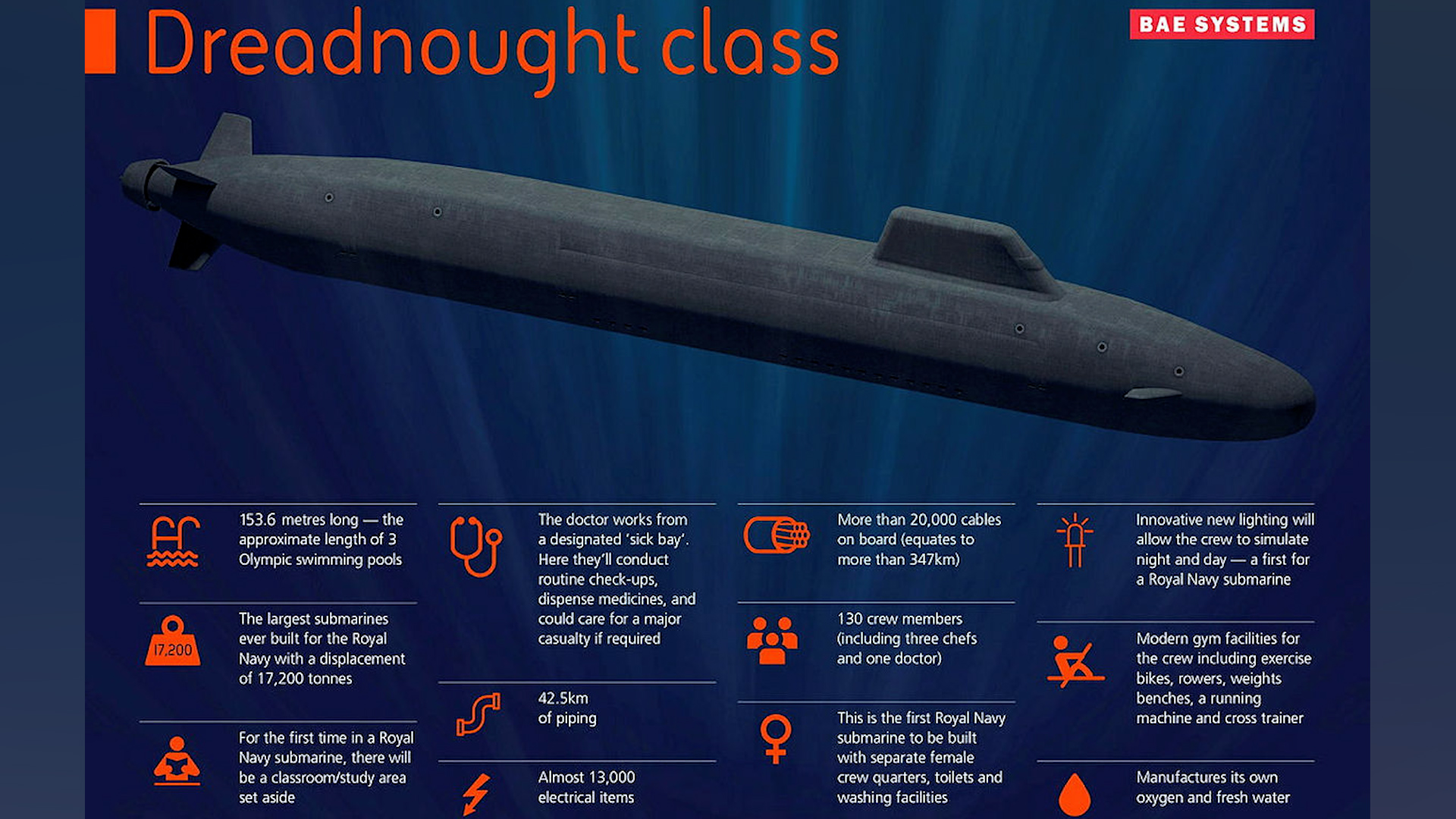
Design
Dreadnought is larger than the previous Vanguard-class, but thanks to innovations in design, the Royal Navy says it will make the Dreadnought submarines "even stealthier".
These submarines will be the first British submarines to feature X-rudders.
Previous submarines used traditional rudders due to their speed and the depths at which they operate, improvements in control and safety now allow for X-form rudders.
These new rudders will sit in front of the very latest Pumpjet propulsor.
These are designed to reduce the noise of the submarines, particularly at high speeds. And the Pumpjet used in the Dreadnought-class of submarines is the "quietest yet", says the Royal Navy.
The Dreadnought-class submarines will be 153.6 meters long (approximately 13 London buses), three metres longer than their Vanguard predecessors, despite having fewer missile tubes.
They will have an unlimited range, able to reach speeds of 20 knots and have a displacement of 17,200 tonnes.
Fly-by-wire technology
'Fly-by-wire' technology, where computers replace the manual input from operators, will be introduced to these next-generation Dreadnought submarines.
The same thinking behind digital cockpits in 21st Century aircraft and helicopters will control key aspects of the Dreadnought-class of submarines such as heading, pitch, depth and buoyancy.
Previously, the Vanguard-class, from the 1980s, saw their movements controlled manually by 'planesmen' operating an aircraft-like control stick, making it a demanding job to keep a 16,000-tonne submarine level.

Construction progress
The first three Dreadnought-class submarines are currently under construction.
Construction of HMS Dreadnought began at BAE Systems' shipyard in Barrow-in-Furness, Cumbria, in October 2016.
In October 2023, a huge section of the HMS Dreadnought submarine was on the move. Protected by what the Navy called "the world's largest black bin bag", the biggest segment completed to date moved through the streets of Barrow-in-Furness from BAE Systems' fabrication facility to the Devonshire Dock Hall.

Construction of HMS Valiant began in September 2019 when the keel was laid.
In May 2022,defence contracts worth more than £2bn were awarded to BAE and Rolls-Royce to begin the third phase in the development of the UK's next-generation nuclear deterrent.
As mentioned, the steel-cutting ceremony for Warspite was held at the Barrow-in-Furness site in February 2023.
In July, a £169m contract to help build this new class of Royal Navy submarines was been awarded to Thales Glasgow.
The company will build the optronic combat system mast for the Dreadnought vessels, known as the 'above water eyes'.
The masts are an update on the traditional periscope that provides improved electronic, stabilised, quality visuals for the crew - providing clearer images of activity and enabling them to detect enemy movements more quickly.
The submarines will start to enter service in the early 2030s, with the construction of Dreadnought supporting tens of thousands of jobs across the UK.




